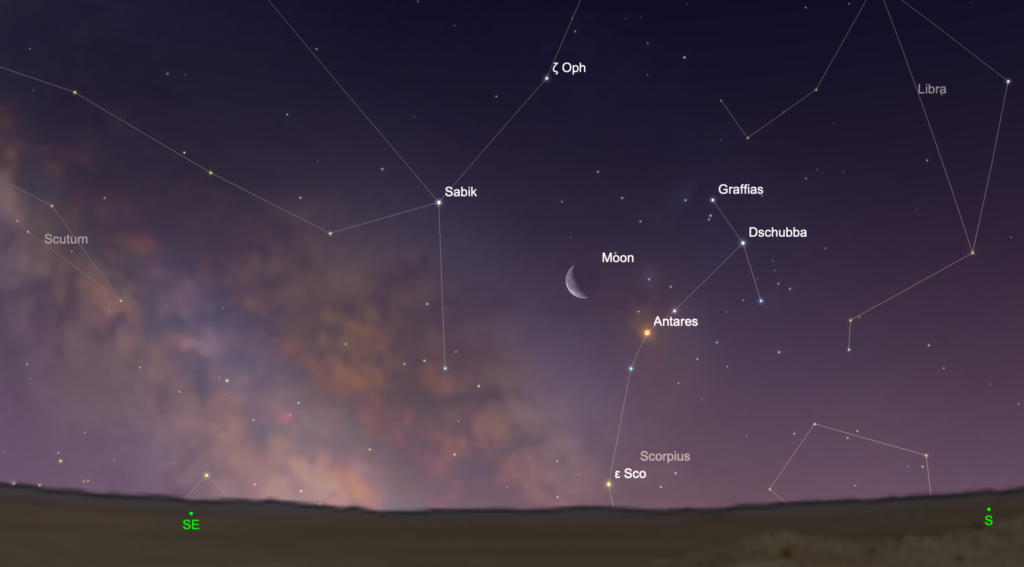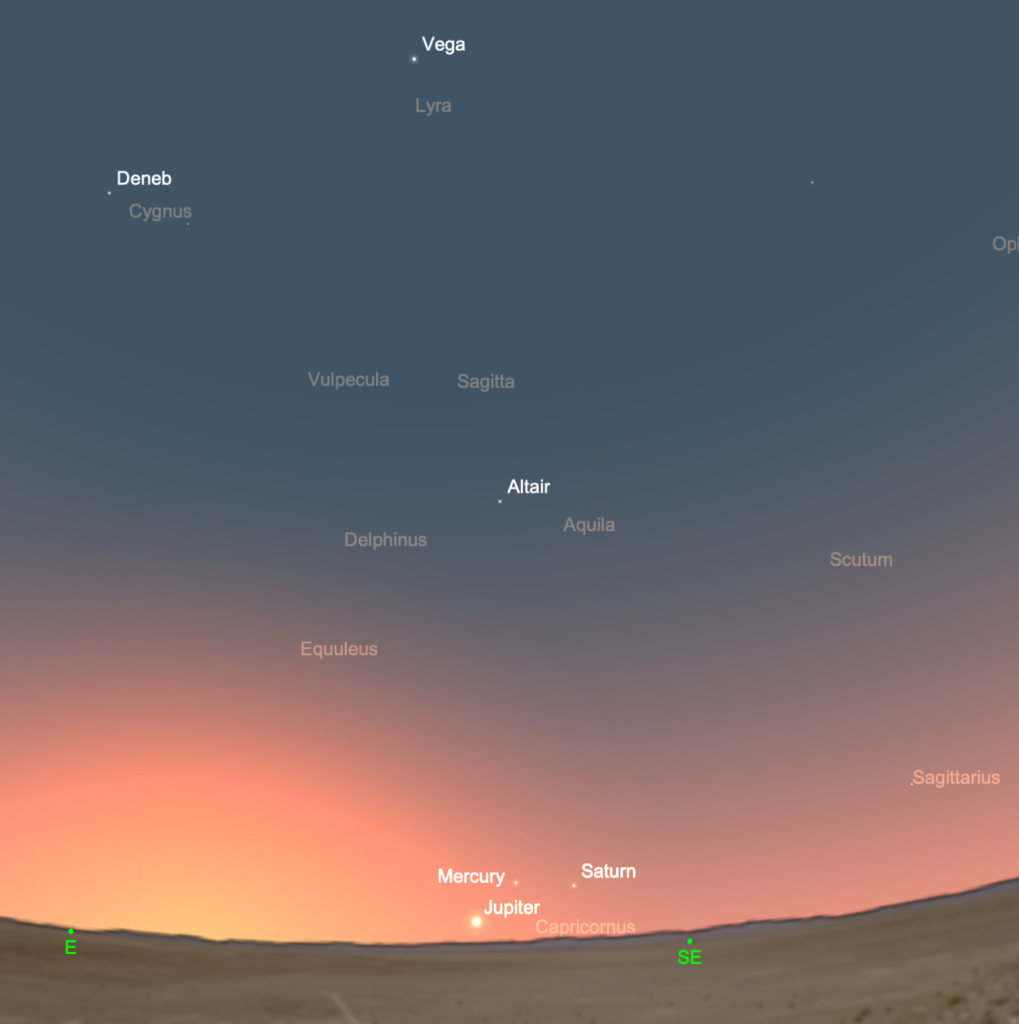
While February can be a month of extreme temperatures, if you’re faced with a clear night sky, resolve to head outside with a telescope or pair of binoculars for a little stargazing. It’s good for the soul. The bright and rich constellations Orion, Canis Major, Taurus, and Auriga dominate the northern sky this month, while southern observers see these same groups along with Puppis, Carina, and Vela, constellations which harbor some of the best sights the night sky has to offer. There are also bright planets to see this month, with Mercury, Jupiter, and Saturn putting on a good show before sunrise. Here’s what to see in the night sky this month…
4 Feb. Last Quarter Moon, 17:37 UT

6 Feb. Look to the southeast before dawn to see the bright red-orange star Antares about 4° from the waning crescent Moon. A pair of binoculars help enhance the color of Antares and offer a bright and pleasing view in the brightening morning sky. If you’re away from light pollution, also look for the band of the Milky Way rising to the east. The thickest parts of the Milky Way come into view from February (in the southeast before dawn) through late September (in the western evening sky, just after dusk).
7 Feb. If you have a good view down to the eastern horizon, look in this direction well before sunrise to see the planet Venus. It’s had a good run in the morning sky for the past 7 months, but it’s on its way to conjunction with the Sun. It will return – to the evening sky – in late April.
11 Feb. New Moon, 19:06 UT
15 Feb. Mercury begins to emerge into the eastern sky just before sunrise. From now until the end of the month, southern-hemisphere observers get their best view of Mercury for the year.
18 Feb. After sunset, look high in the west/southwest to see Mars about 3º from the waxing crescent Moon. While the Red Planet is well past opposition, at magnitude +0.8 it still outshines most stars. It’s not much to look at in a telescope, however, as it spans just 7”, more than three times smaller than its apparent size last October.
19 Feb. First Quarter Moon, 18:47 UT
19 Feb. The half-lit Moon lies between the Pleiades and Hyades star clusters in the constellation Taurus. Mars hovers nearby.

25 Feb. Today and for the next couple of days, get up a couple of hours before the Sun to see Jupiter, Saturn and Mercury rising together in the east/southeast. Look higher up to see the Summer Triangle (also called the Northern Triangle) formed by the stars Vega, Altair, and Deneb. A welcome foreshadowing of warmer days ahead for northern stargazers.
27 Feb. Full Moon, 08:17 UT
28 Feb. Mars enters the constellation Taurus as the month ends. It lies just 4º south of the Pleiades star cluster tonight, and spends the next month passing through the constellation. Now faded to magnitude +0.9, Mars makes a fine color contrast to the blue-white stars of the Pleiades and closely matches color and brightness to the bright star Aldebaran in the ‘eye’ of the celestial bull.